This article was co-authored by Katie Marks-Cogan, MD. Dr. Katie Marks-Cogan is a board certified Pediatric & Adult Allergist at Clear Allergy based in Los Angeles, California. She is the Chief Allergist for Ready, Set, Food!, an infant dietary supplement designed to reduce the risk of childhood food allergies. She received her M.D. with honors from the University of Maryland. She then completed her residency in Internal Medicine at Northwestern University and fellowship in Allergy/Immunology at the University of Pennsylvania and CHOP.
There are 7 references cited in this article, which can be found at the bottom of the page.
This article has been viewed 190,301 times.
Gluten sensitivity and lactose intolerance have very similar symptoms, but there are ways to find out if one of these is affecting you. Our guide will show you how changing your diet can help you narrow down the issue and possibly even minimize or prevent your symptoms.
Steps
Determining if You Have Food Sensitivities
-
1Talk to your doctor. It's crucial to talk to your doctor (possibly an allergist) if you suspect you have a food allergy. They will be able to guide you on what's appropriate as far as diet, diagnostic tests and treatment.
- Tell your doctor about your symptoms. While a food allergy can cause some of the same symptoms an intolerance or sensitivity, other symptoms include: rash, hives, itchy skin, shortness of breath, chest pain, or even a sudden drop in blood pressure. A food allergy usually comes on suddenly after exposure and can be life-threatening.[1]
- Never start a restrictive or elimination diet prior to talking to your doctor or a allergy certified registered dietitian.
- Do not eat any foods that you think could cause life threatening allergic responses unless under the care of a physician.
- If symptoms do not resolve after eliminating the suspected offending food, go back to the doctor for further evaluation.
-
2Start a food/symptom journal. Logging all your meals, snacks and beverages along with any symptoms you may experience can help you figure out what type of sensitivity you have and to what food. It will be difficult to determine what food is causing you symptoms without a journal.
- It might be wise to do your journal by hand. Start with a notebook and jot down everything you consume (including any supplements or medications) and symptoms you experience. Many food journaling apps are not detailed enough for what you should be tracking.
- Make sure to note the time you ate and the time you experience symptoms (if at all). Typical food sensitivities symptoms may include: nausea, vomiting, upset stomach, diarrhea, fatigue, rashes, and gas.[2]
- Also include the serving size of the foods you consume. For example, some individuals have an extreme lactose intolerance (meaning they cannot tolerate any lactose), but others may have a mild lactose intolerance (and can tolerate small doses of lactose). By logging how much you eat, you can gauge the amount of your body will tolerate without adverse symptoms.
Advertisement -
3Eat a regular diet for two weeks. To help you decide what food is giving you trouble, you actually need to consume that food. You'll need to trigger the symptoms to be able to associate those symptoms with a specific food and then avoid them to see if symptoms disappear.
- Continuing with a regular, non-restrictive diet may not be comfortable, but producing symptoms will help point the finger at the suspected food. Only upon elimination of the food and resolution of symptoms will you have an accurate answer.
- You may only have one symptom or you may experience multiple symptoms. They usually begin between 30 minutes and two hours after the food is consumed.[3]
- Typical symptoms of food sensitivities include: bloating, gas, stomach pain, diarrhea and/or nausea.[4]
- If your symptoms are life threatening, do not consume any food you suspect will trigger symptoms. You can perform oral food challenges in the care of a doctor in a safe and controlled environment.
-
4Eliminate lactose-containing products. Identify foods containing lactose and eliminate all of them from your diet. If you are lactose intolerant, symptoms you were experiencing during the non-restrictive diet should be alleviated and discontinue.
- Milk and milk products contain the sugar lactose. Foods that are mainly dairy or have been made with dairy will contain lactose in varying amounts.
- Check ingredient lists on all products. Some lesser known dairy products that contain lactose are whey, caseinate, malted milk, milk derivative and milk solids. The lesser known dairy products are usually used as an ingredient in another type of food.
- Avoid antacids. Many antacids contain lactose and will make the symptoms worse. Discuss medication options for other alternatives to acid reducers with your doctor if you feel it is necessary.
- If symptoms continue after two weeks of a lactose-free diet, you most likely have a different food sensitivity. Dairy and other lactose containing products can be added back into the diet.
- If you add lactose back to your diet and your symptoms worsen, you may have dual sensitivities and lactose is only part of the problem. Continue to keep lactose out of your diet.
-
5Eliminate foods containing gluten. Identify foods containing gluten and eliminate all of them from your diet. If you have a gluten sensitivity any symptoms should resolve after you discontinue eating gluten containing foods.
- Wheat and wheat products contain gluten. Also, other grains, such as barley and rye contain gluten. Gluten is in a wide range of foods and can be very hard to avoid. It is found in most breads, beer, other baked goods and pasta.[5]
- Read ingredient labels on all products. Gluten may be added to foods for its functional properties, and may be on the ingredient statement as vital wheat gluten, wheat gluten or just gluten. Also, malt contains gluten and is often added as a flavoring to many processed foods (like soy sauce). Some other lesser known ingredients containing gluten are Atta flour, bulgur, couscous, farina, graham, wheat bran, wheat germ, wheat starch, triticale and matzoh.[6]
- If symptoms continue after two weeks of a gluten-free diet, you most likely have a different food sensitivity. Gluten containing products can be added back into the diet.
- If you add gluten back to your diet and your symptoms worsen, you may have dual sensitivities and gluten is only part of the problem. Continue to keep gluten out of your diet.
-
6Take a lactose tolerance test. If you feel compelled or a doctor recommends a concrete diagnosis, you can take one of the three tests used by medical professionals to determine lactose intolerance.
- The blood lactose tolerance test will measure how well your body digests lactose. It is done by drinking a lactose solution and then having several blood samples drawn over a period of time. This test is mainly used for adults.[7]
- The hydrogen breath test measures amount of hydrogen during respiration. The more hydrogen that is breathed out, the better the body is digesting the lactose. This test is non-invasive and used for adults.[8]
- Stool acidity test. The stool acidity test measures the acidity of stool after consumption of lactose. The more acidic the stool, the less the body is able to digest lactose. This test is mainly used for children.
Following a Healthy and Balanced Diet with Food Sensitivities
-
1Talk to a registered dietitian. Living with food allergies or sensitivities can be difficult. This is especially true if you have an issue with more than one food. Restrictive diets or fear of foods may cause you not to eat a balanced diet. A dietitian can help you find a diet that's appropriate for you.
- Cutting out or eliminating the offending food is one of the only ways to deal with sensitivities.[9] However, an overly restrictive diet may not provide your body with the recommended amount of a variety of essential nutrients.
- Review your medical history, thoughts on what your offending foods are and your food and symptom journal with your dietitian. They are nutrition experts and will be able to provide you with a meal plan and food substitutes that will not cause a reaction.
-
2Continue with your food/symptom journal. Although you may have figured out which food has been causing symptoms, it's still wise to continue with your journal. This will help other health professionals and yourself as you continue to modify and change your diet.
- Food and symptom journals are also incredibly helpful to allergists, dietitians and other health professionals. They may see patterns or trends in your journal that you do not.
- If you have a flare up of symptoms again, you'll be able to return to your journal to see what the offending food was and how to replace that or avoid it in the future.
-
3Use lactose-free foods. The best way to treat lactose intolerance is to avoid lactose containing products. Avoiding most or all foods with lactose will be the primary way you will avoid symptoms long-term.[10] However, it's important to replace nutrients commonly found in lactose containing foods.
- Lactose containing foods are generally high in calcium, vitamin D and phosphorus. You can get these nutrients from other foods like: broccoli, canned salmon, fortified juices, pinto beans and spinach.
- There are many lactose free and lactose reduced milks, yogurt and cheese. These types of products may not be easy to find and have a slightly different taste than the original, but work great as substitutes. All vegan products, like vegan cheese, will also not contain any lactose. These are a safe bet when purchasing dairy alternatives.
- Take a lactase enzyme supplement. These are pills that can be taken before the consumption of lactose to help digest the lactose. They are sold at most pharmacies and health food stores.[11]
-
4Consume gluten free foods. The best way to avoid symptoms related to a gluten sensitivity is to give up and eliminate all gluten containing foods from your diet. Again, it's important to replace any nutrients that were found in gluten containing foods.
- The biggest and most common source of gluten is wheat (followed by barley and rye). Common nutrients found in these grains are folate, thiamin, riboflavin and other B vitamins.[12] Fortunately other food groups contain many of these vitamins - like protein foods. In addition, consuming other grains that do not contain gluten and have a variety of B vitamins include: quinoa, teff, amaranth, rice, corn and buckwheat.
- Currently there are many specialty pre-packaged foods that are gluten free. Anything from pasta, muffins, breads, baking mixes, waffles, pancakes, etc. These can be found at most grocery stores.
- There is no medication or supplement that can prevent or lessen symptoms from a gluten sensitivity.
-
5Take supplements. If you plan to avoid lactose or gluten containing foods, talk with a doctor about supplementation. You may need to replace vitamins, minerals and other nutrients found in these foods.
- There are a variety of over-the-counter vitamins and minerals that can help you replace nutrients in foods you are avoiding.[13]
- Note, it's not ideal or recommended to rely solely on supplements for your nutrition. The best source of nutrients is from consuming foods.
- Always talk to your doctor prior to starting any vitamin/mineral supplement to make sure it's safe and appropriate for you.
Expert Q&A
-
QuestionIs there a difference between a gluten allergy and a gluten sensitivity?
 Katie Marks-Cogan, MDDr. Katie Marks-Cogan is a board certified Pediatric & Adult Allergist at Clear Allergy based in Los Angeles, California. She is the Chief Allergist for Ready, Set, Food!, an infant dietary supplement designed to reduce the risk of childhood food allergies. She received her M.D. with honors from the University of Maryland. She then completed her residency in Internal Medicine at Northwestern University and fellowship in Allergy/Immunology at the University of Pennsylvania and CHOP.
Katie Marks-Cogan, MDDr. Katie Marks-Cogan is a board certified Pediatric & Adult Allergist at Clear Allergy based in Los Angeles, California. She is the Chief Allergist for Ready, Set, Food!, an infant dietary supplement designed to reduce the risk of childhood food allergies. She received her M.D. with honors from the University of Maryland. She then completed her residency in Internal Medicine at Northwestern University and fellowship in Allergy/Immunology at the University of Pennsylvania and CHOP.
Board Certified Pediatric & Adult Allergist It helps to think of food intolerance as a spectrum. A severe allergy may have serious symptoms, like swelling and trouble breathing, and you may need to carry an epipen with you in the event that you experience anaphylaxis. An intolerance, or sensitivity, is typically associated with symptoms like diarrhea, abdominal pain, and even anemia.
It helps to think of food intolerance as a spectrum. A severe allergy may have serious symptoms, like swelling and trouble breathing, and you may need to carry an epipen with you in the event that you experience anaphylaxis. An intolerance, or sensitivity, is typically associated with symptoms like diarrhea, abdominal pain, and even anemia. -
QuestionCan you test for gluten intolerance at home?
 Katie Marks-Cogan, MDDr. Katie Marks-Cogan is a board certified Pediatric & Adult Allergist at Clear Allergy based in Los Angeles, California. She is the Chief Allergist for Ready, Set, Food!, an infant dietary supplement designed to reduce the risk of childhood food allergies. She received her M.D. with honors from the University of Maryland. She then completed her residency in Internal Medicine at Northwestern University and fellowship in Allergy/Immunology at the University of Pennsylvania and CHOP.
Katie Marks-Cogan, MDDr. Katie Marks-Cogan is a board certified Pediatric & Adult Allergist at Clear Allergy based in Los Angeles, California. She is the Chief Allergist for Ready, Set, Food!, an infant dietary supplement designed to reduce the risk of childhood food allergies. She received her M.D. with honors from the University of Maryland. She then completed her residency in Internal Medicine at Northwestern University and fellowship in Allergy/Immunology at the University of Pennsylvania and CHOP.
Board Certified Pediatric & Adult Allergist Unfortunately, there is no diagnostic test for gluten sensitivity. It is "diagnosed" by exclusion only. So if symptoms go away or are managed well on a gluten-free diet, you can assume a gluten sensitivity.
Unfortunately, there is no diagnostic test for gluten sensitivity. It is "diagnosed" by exclusion only. So if symptoms go away or are managed well on a gluten-free diet, you can assume a gluten sensitivity. -
QuestionWhat are the hardest foods for your body to digest?
 Peter Gardner, MDPeter W. Gardner, MD is a board certified physician who has practiced Gastroenterology and Hepatology for over 30 years. He specializes in diseases of the digestive system and liver. Dr. Gardner earned his Bachelor’s degree from the University of North Carolina and attended Georgetown Medical School. He completed his residency in Internal Medicine and then his fellowship in Gastroenterology at the University of Connecticut. He is a previous Chief of Gastroenterology at Stamford Hospital and remains on the staff. He is also on the staff of Greenwich Hospital and New York (Columbia) Presbyterian Hospital. Dr. Gardner is an Approved Consultant in Internal Medicine and Gastroenterology with the American Board of Internal Medicine.
Peter Gardner, MDPeter W. Gardner, MD is a board certified physician who has practiced Gastroenterology and Hepatology for over 30 years. He specializes in diseases of the digestive system and liver. Dr. Gardner earned his Bachelor’s degree from the University of North Carolina and attended Georgetown Medical School. He completed his residency in Internal Medicine and then his fellowship in Gastroenterology at the University of Connecticut. He is a previous Chief of Gastroenterology at Stamford Hospital and remains on the staff. He is also on the staff of Greenwich Hospital and New York (Columbia) Presbyterian Hospital. Dr. Gardner is an Approved Consultant in Internal Medicine and Gastroenterology with the American Board of Internal Medicine.
Board Certified Gastroenterologist Eating high fat foods slows down the emptying of the stomach, which can cause digestive issues. Food and drinks containing lactose can cause issues including bloating, diarrhea, and gas if you are lactose intolerant. Foods containing gluten, such as bread, can also cause gas for those with celiac disease.
Eating high fat foods slows down the emptying of the stomach, which can cause digestive issues. Food and drinks containing lactose can cause issues including bloating, diarrhea, and gas if you are lactose intolerant. Foods containing gluten, such as bread, can also cause gas for those with celiac disease.
References
- ↑ http://www.webmd.com/allergies/foods-allergy-intolerance#1
- ↑ Katie Marks-Cogan, MD. Board Certified Pediatric & Adult Allergist. Expert Interview. 9 December 2019.
- ↑ http://www.mayoclinic.org/diseases-conditions/lactose-intolerance/basics/symptoms/con-20027906
- ↑ http://www.mayoclinic.org/diseases-conditions/lactose-intolerance/basics/symptoms/con-20027906
- ↑ http://www.mayoclinic.org/diseases-conditions/celiac-disease/basics/lifestyle-home-remedies/con-20030410
- ↑ http://www.mayoclinic.org/diseases-conditions/celiac-disease/basics/lifestyle-home-remedies/con-20030410
- ↑ http://www.mayoclinic.org/diseases-conditions/lactose-intolerance/basics/tests-diagnosis/con-20027906
- ↑ http://www.mayoclinic.org/diseases-conditions/lactose-intolerance/basics/tests-diagnosis/con-20027906
- ↑ http://www.mayoclinic.org/diseases-conditions/lactose-intolerance/basics/tests-diagnosis/con-20027906
- ↑ http://www.mayoclinic.org/diseases-conditions/lactose-intolerance/basics/lifestyle-home-remedies/con-20027906
- ↑ http://www.mayoclinic.org/diseases-conditions/lactose-intolerance/basics/lifestyle-home-remedies/con-20027906
- ↑ http://www.mayoclinic.org/healthy-lifestyle/nutrition-and-healthy-eating/in-depth/whole-grains/art-20047826
- ↑ http://www.mayoclinic.org/diseases-conditions/lactose-intolerance/basics/lifestyle-home-remedies/con-20027906
About This Article
If you think you might have a gluten allergy or lactose intolerance, talk to your doctor about your symptoms. They can assess your symptoms and run tests to help you determine what’s causing them. To narrow down the potential triggers, write down everything you eat and any symptoms you experience in a food journal. Include details like when you ate the food and when the symptoms started. Eat your normal diet for 2 weeks and watch for problems, then try eliminating potential triggers, such as milk or wheat products. If your symptoms go away, add the eliminated foods back into your diet one by one and see if they return. For a more definite diagnosis, ask your doctor about taking tests such as a blood lactose tolerance test. Read on for more advice from our Medical co-author, including how to eat a balanced diet if you have food sensitivities.




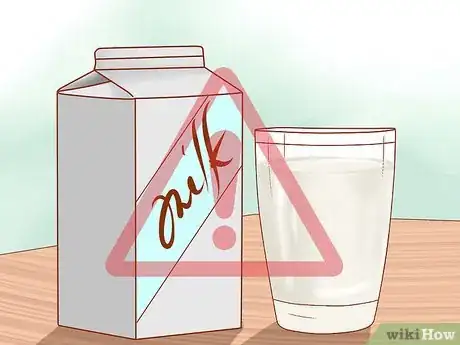
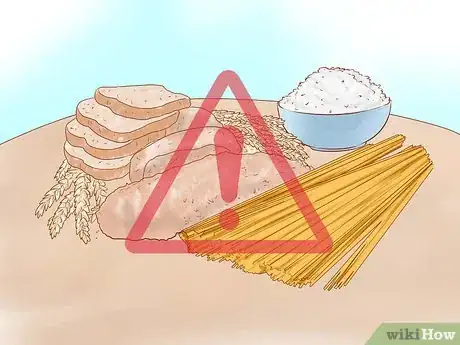



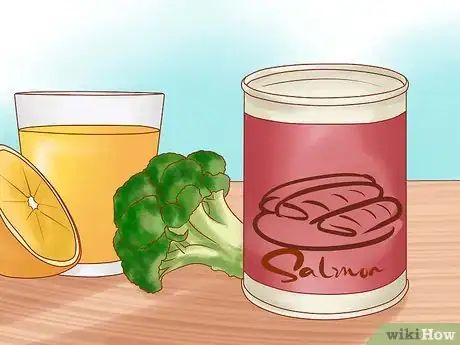
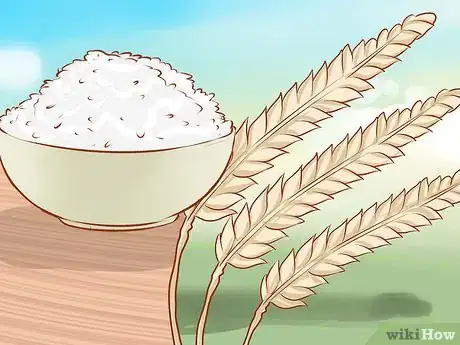


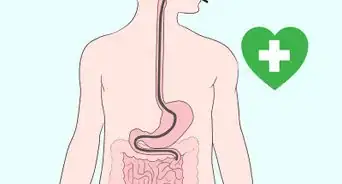





















































Medical Disclaimer
The content of this article is not intended to be a substitute for professional medical advice, examination, diagnosis, or treatment. You should always contact your doctor or other qualified healthcare professional before starting, changing, or stopping any kind of health treatment.
Read More...